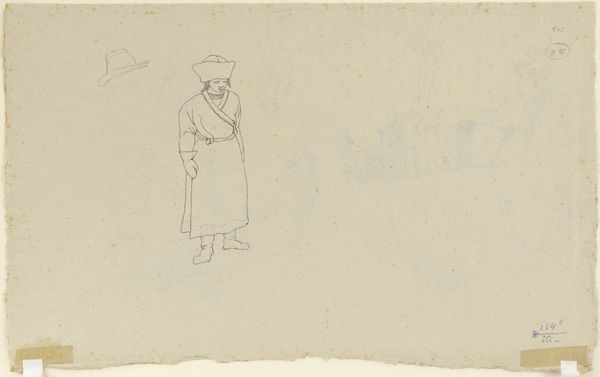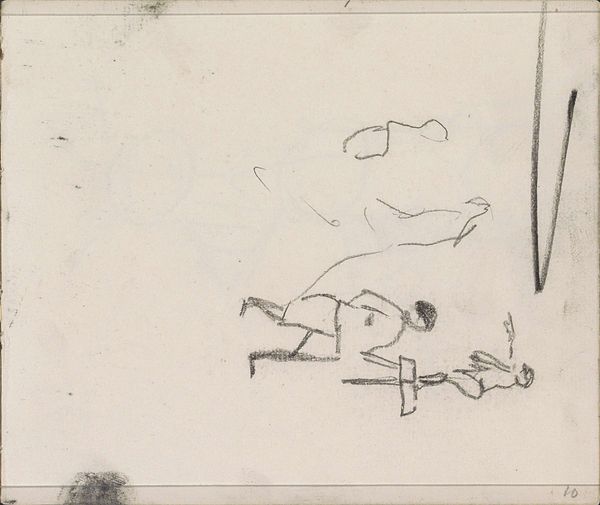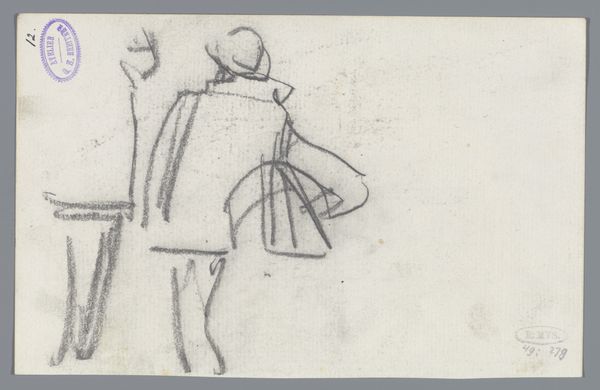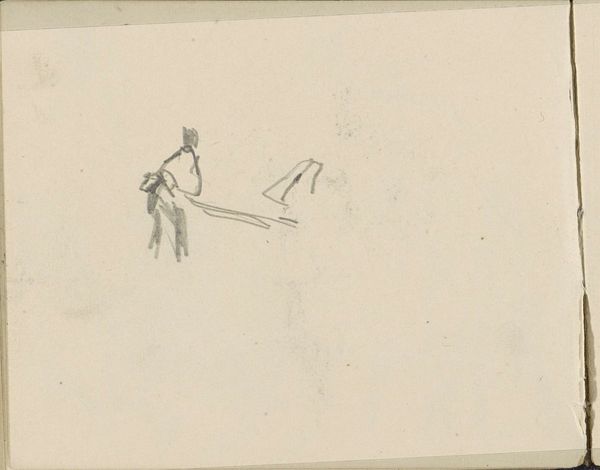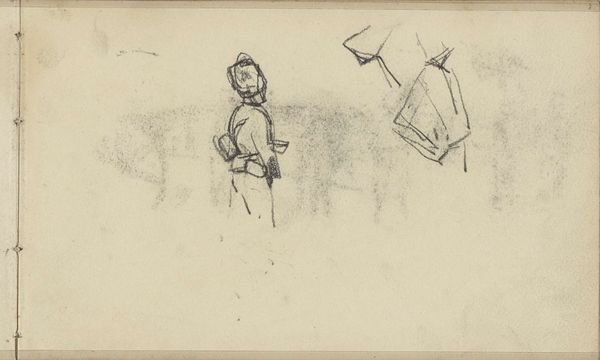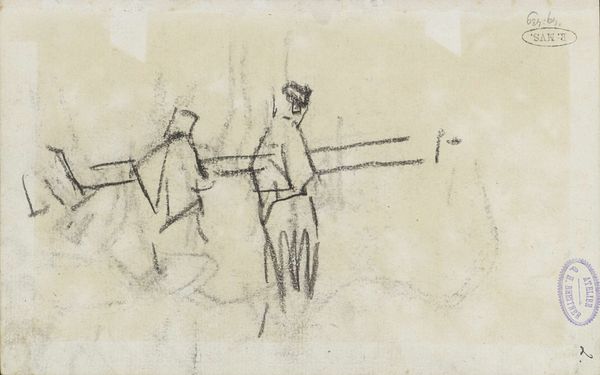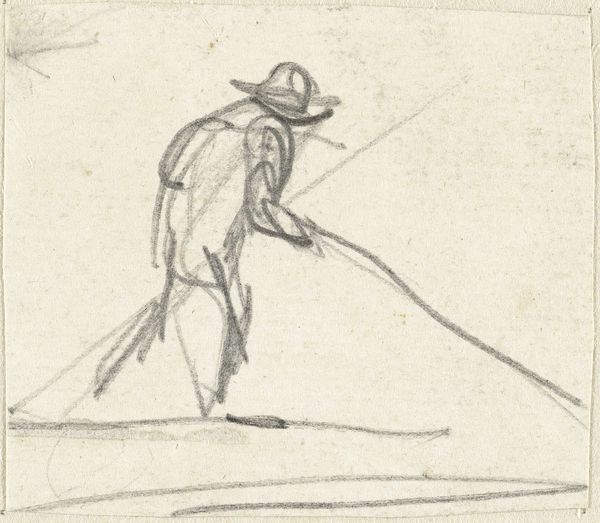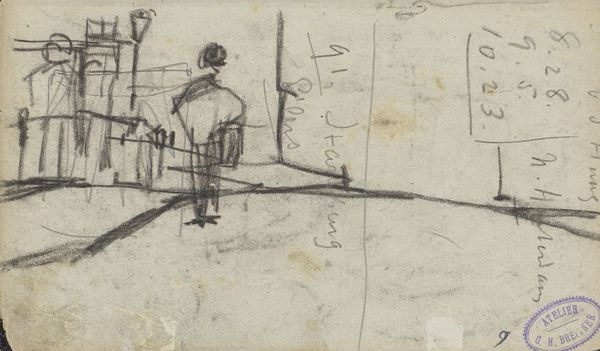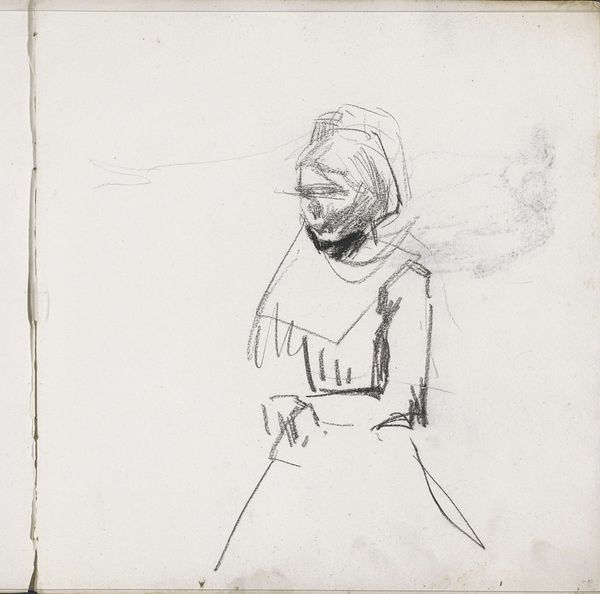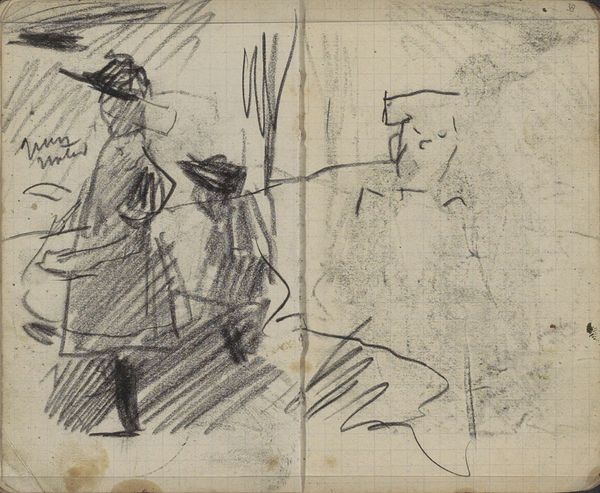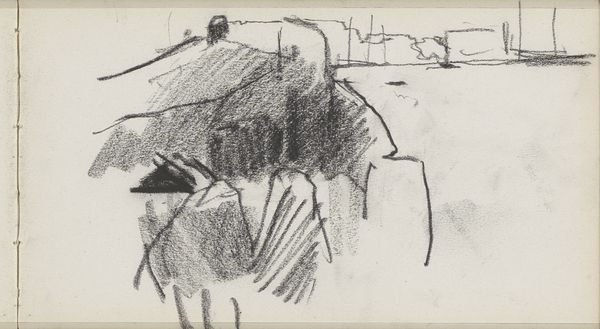
drawing, charcoal
#
portrait
#
drawing
#
impressionism
#
figuration
#
charcoal
Copyright: Rijks Museum: Open Domain
Curator: Here at the Rijksmuseum, we have George Hendrik Breitner’s “Man met hoed, op de rug gezien,” which roughly translates to "Man with hat, seen from the back," created sometime between 1887 and 1889. It’s a charcoal drawing, and quite simple. Editor: Yes, my first impression is one of fleeting observation. There's a casual, almost unfinished quality to it. It feels like a quick sketch capturing a moment in time. Curator: Exactly! Breitner was deeply invested in capturing the dynamism of Amsterdam life. Notice the gestural lines, particularly how they define the man’s coat and the tilt of his hat. It conveys movement and a sense of anonymity. Editor: The anonymity is interesting. He’s just a figure, any figure, in a rapidly modernizing urban landscape. Given the time, you can almost imagine him as part of the rising bourgeoisie, consumed in their activities, backs turned to societal upheaval or inequality. Curator: While that's a valid interpretation, I see it more in terms of Breitner’s engagement with impressionistic principles. His focus appears to be more on the optical experience - how light and shadow play across the figure, abstracting him in the process. He's simplified the human form down to its essence. Editor: But is that simplification devoid of social context? The figure’s posture, the very act of turning away from the viewer… it suggests detachment, perhaps even a subtle critique of the indifference that can come with urban life. Breitner positions us as outsiders, excluded from knowing who this man is, underscoring themes of alienation. Curator: Perhaps. Or perhaps Breitner, like many impressionists, was primarily interested in capturing the sensory experience of modernity. The formal elements of line and composition work to create a sense of immediacy that is free of heavy-handed meaning. The lack of detail pushes us towards the essence of pure form. Editor: I find the "lack of detail" quite telling. Is it artistic intention, a stylistic choice? Or, unintentionally, is it subtly illustrating social barriers, lack of access, deliberate ignorance even? Food for thought! Curator: Indeed. What begins as a simple sketch reveals the complexities beneath the surface, regardless of our intent to find them. Editor: Absolutely. A humble drawing which reminds us how even the most informal piece is situated squarely in a specific time, which we still examine today.
Comments
No comments
Be the first to comment and join the conversation on the ultimate creative platform.
